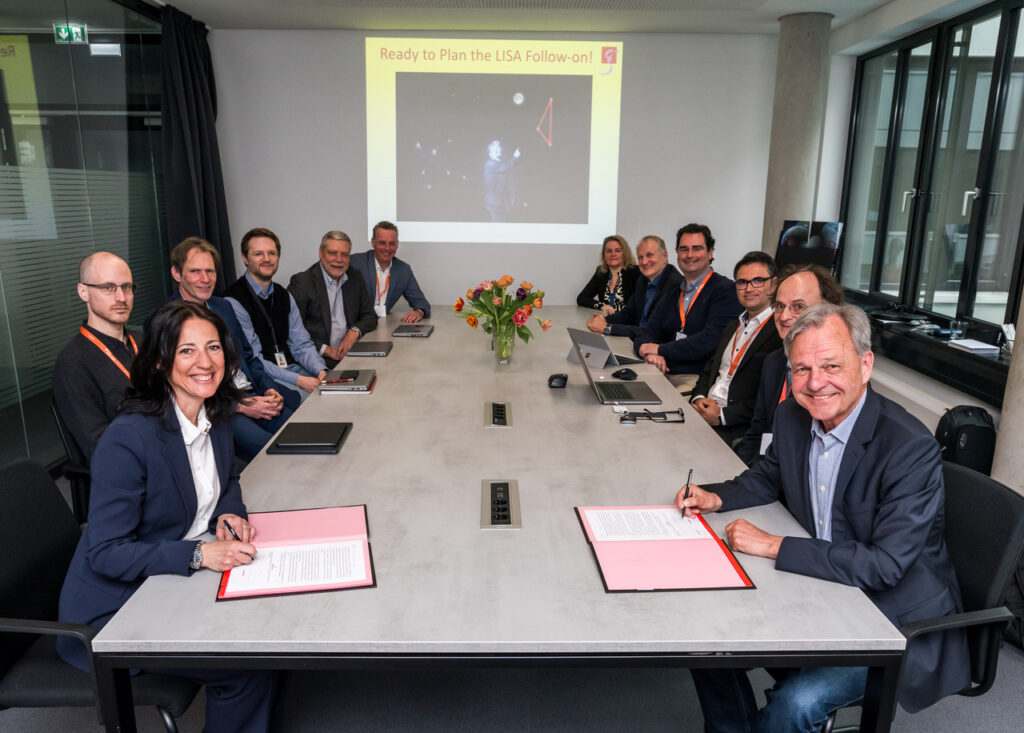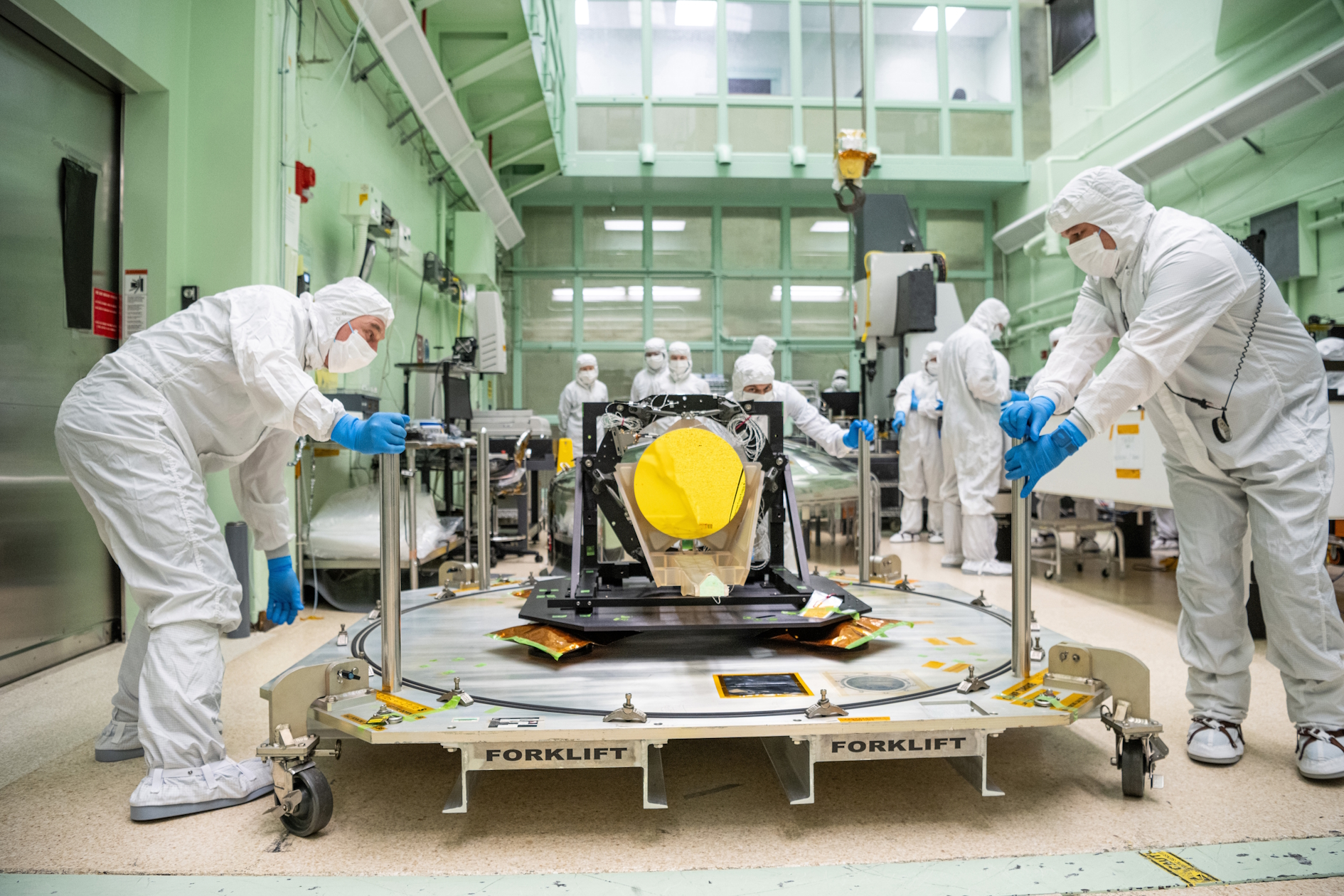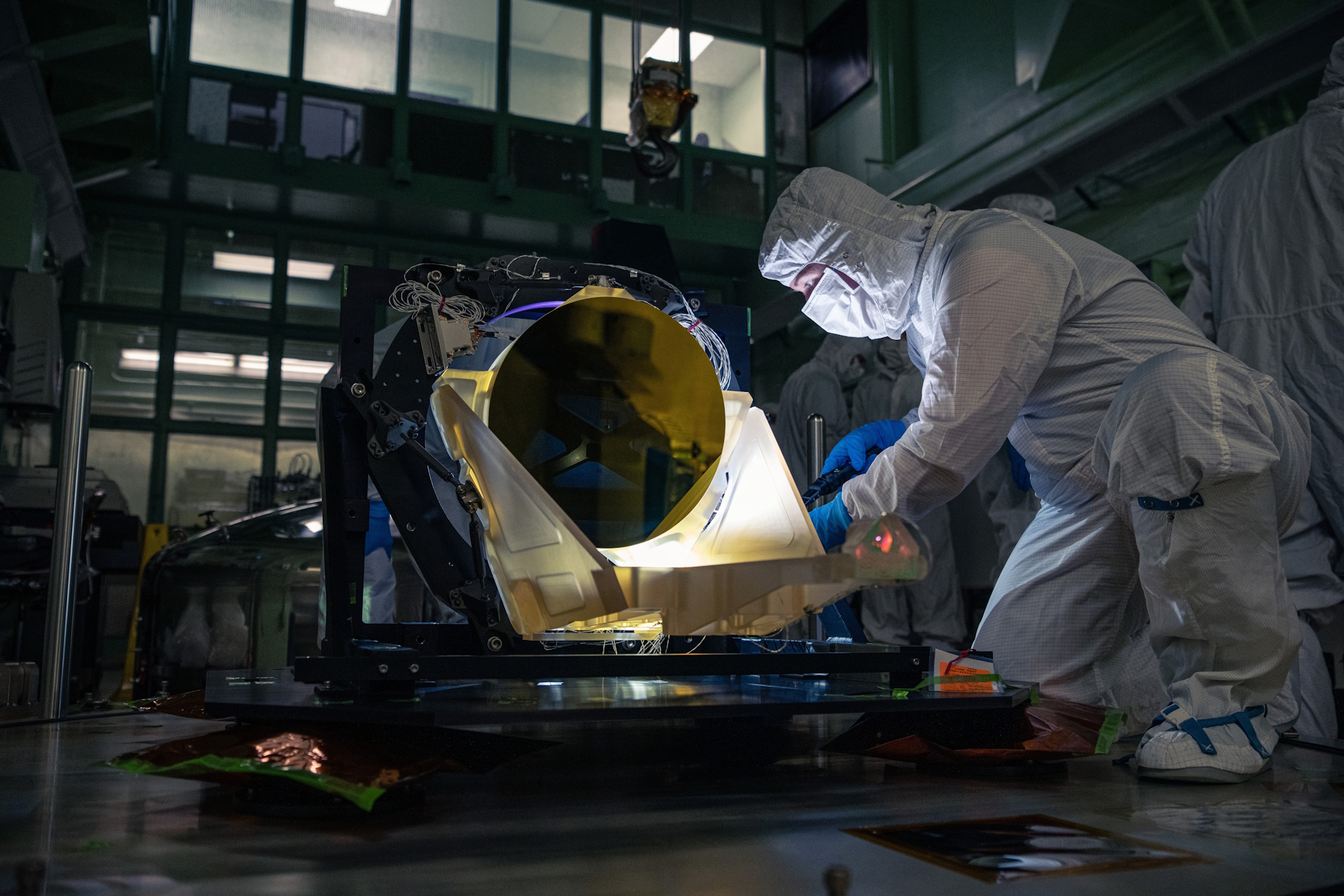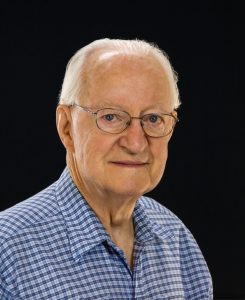Following today´s Adoption, the LISA mission advances to the construction phase
LISA, the Laser Interferometer Space Antenna, has passed a major review with flying colours: the entire concept - from the definition of the overall mission and operations to the space hardware to be built - stood up to the intense scrutiny of ESA´s reviewers. Now the space agency´s Science Programme Committee (SPC) has confirmed that LISA is sufficiently mature and that mission development can proceed as planned. LISA should go into orbit in the mid 2030s.
“With the Adoption decision, LISA is now firmly established in ESA’s programme of missions. We are looking forward to realising LISA in a close collaboration of ESA, NASA, ESA member states and the wider LISA Consortium” says Karsten Danzmann, Lead of the LISA Consortium, Max Planck Institute for Gravitational Physics and Leibniz University Hannover.
“This trailblazing mission will take us to the next level in a really exciting area of space science and keep European scientists at the forefront of gravitational wave research,” says ESA Director of Science Carole Mundell.
Mission Adoption Review and Mission Adoption
LISA´s successful Mission Adoption Review and the adoption by ESA´s Science Programme Committee on January 25th was the formal end of the study phase. LISA will now transition into the implementation phase where the next key milestones are the selection of an industrial prime contractor, the Preliminary Design Review, and the Critical Design Review.
During the study phase the LISA team focused on developing the requirements for the mission and on developing key technologies to appropriate Technology Readiness Levels. All mission partners and contractors agreed to a set of key interfaces and performance requirements, which will be used as the basis for contracts during the implementation stage. ESA and its mission partners also defined their future cooperation by establishing the necessary international agreements, covering items such as hardware provisions, responsibilities for the scientific outputs of the mission, and data.
LISA’s science to explore an invisible universe
LISA will detect gravitational radiation in the yet unexplored window between 0.1 mHz and 1 Hz, waves that cannot be detected by ground-based detectors. Waves in this frequency range are created in the collision and merger of two massive black holes, a million or more times heavier than our Sun, lurking at the centres of distant, still forming galaxies. LISA will be sensitive to these mergers across the Universe’s history, directly probing the yet unknown origin and growth of massive black holes. Unique to LISA is the detection of gravitational waves from stellar black holes swirling around massive ones in galactic nuclei, to probe the geometry of spacetime and test gravity in its foundations. LISA will also detect a large number of binary and multiple compact objects in our Milky Way galaxy to tell us about stellar binary evolution, and “see” the Galaxy beyond the Galactic Centre, including many objects invisible to all other astronomical instruments.
In short, using only gravity for signals, LISA will complement our knowledge about the beginning, evolution and structure of our Universe. In addition, studying gravitational waves has enormous potential for discovering those parts of the Universe that are not yet observed such as the gravitational repercussions from the Big Bang, the ripples of spacetime emerging from perturbations of the primaeval plasma, and other, as yet unknown, objects. Working in conjunction with other astronomical methods and gravitational-wave observatories on Earth, LISA scientists will contribute to the next big discoveries to answer questions such as “What are the fundamental laws of the Universe?” and “How did the Universe originate and what is it made of?”
The LISA instrument is a first of its kind space borne gravitational wave observatory. It will consist of three spacecraft in a triangular configuration with 2.5-million-kilometre arms, moving in an Earth-like orbit around the Sun. Gravitational waves from sources throughout the Universe will produce slight oscillations in the arm lengths (smaller than the diameter of an atom). LISA will capture these motions and thus measure the gravitational waves by using laser links to monitor the displacements of test masses free-falling inside the spacecraft. The LISA satellites and their scientific payload are being built by ESA, ESA member nations, and NASA.
Hardware was already successfully tested
LISA’s underlying measurement technology was successfully demonstrated in space with ESA’s LISA Pathfinder (LPF) mission in which NASA participated. LPF demonstrated that it’s possible to place test masses in free-fall to an astonishing level and that the exquisite metrology needed for LISA meets the requirements.
The LISA Consortium is a large international collaboration that combines the resources and expertise from scientists in many countries all over the world. Together with ESA, its member states, and NASA, the LISA Consortium is working to bring the LISA Mission to fruition.
Further information
https://lisamission.org/
https://www.esa.int/Newsroom/Press_Releases/
https://www.esa.int/Science_Exploration/Space_Science/Capturing_the_ripples_of_spacetime_LISA_gets_go-ahead
https://www.esa.int/Science_Exploration/Space_Science/LISA_factsheet
https://lisa.nasa.gov/
Science contact
Prof. Dr. Karsten Danzmann
Phone: +49 511 762-2356
karsten.danzmann@aei.mpg.de
Media contact
Susanne Milde
Phone: +49 0172 3931349
milde@mildemarketing.de



